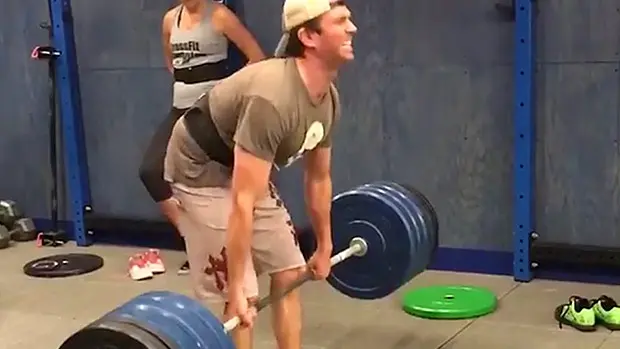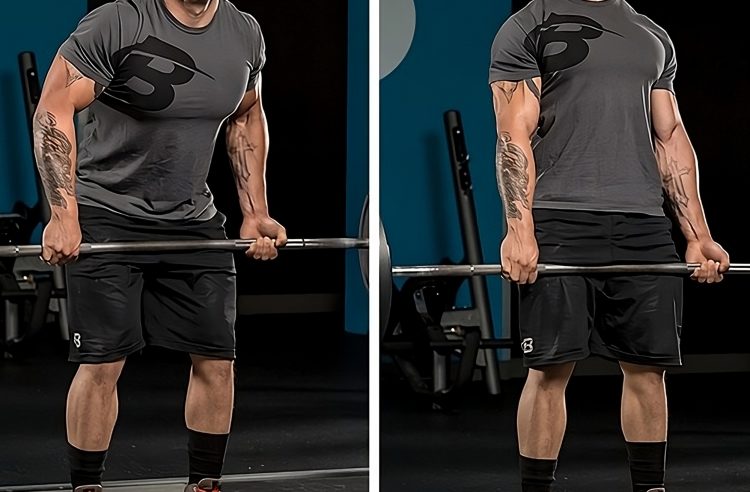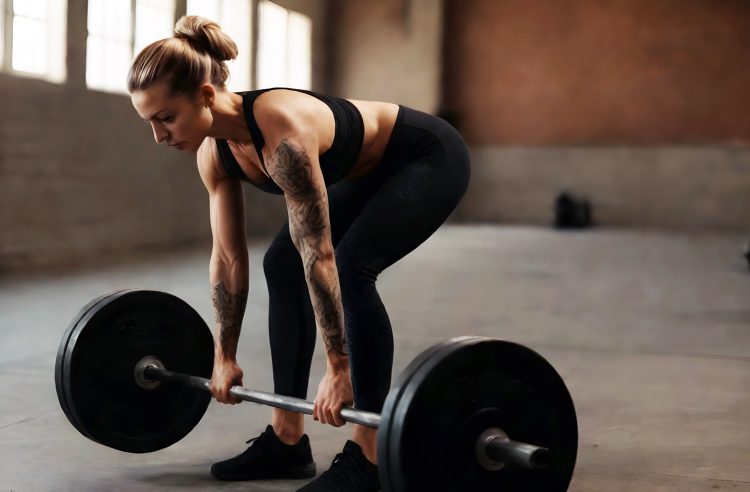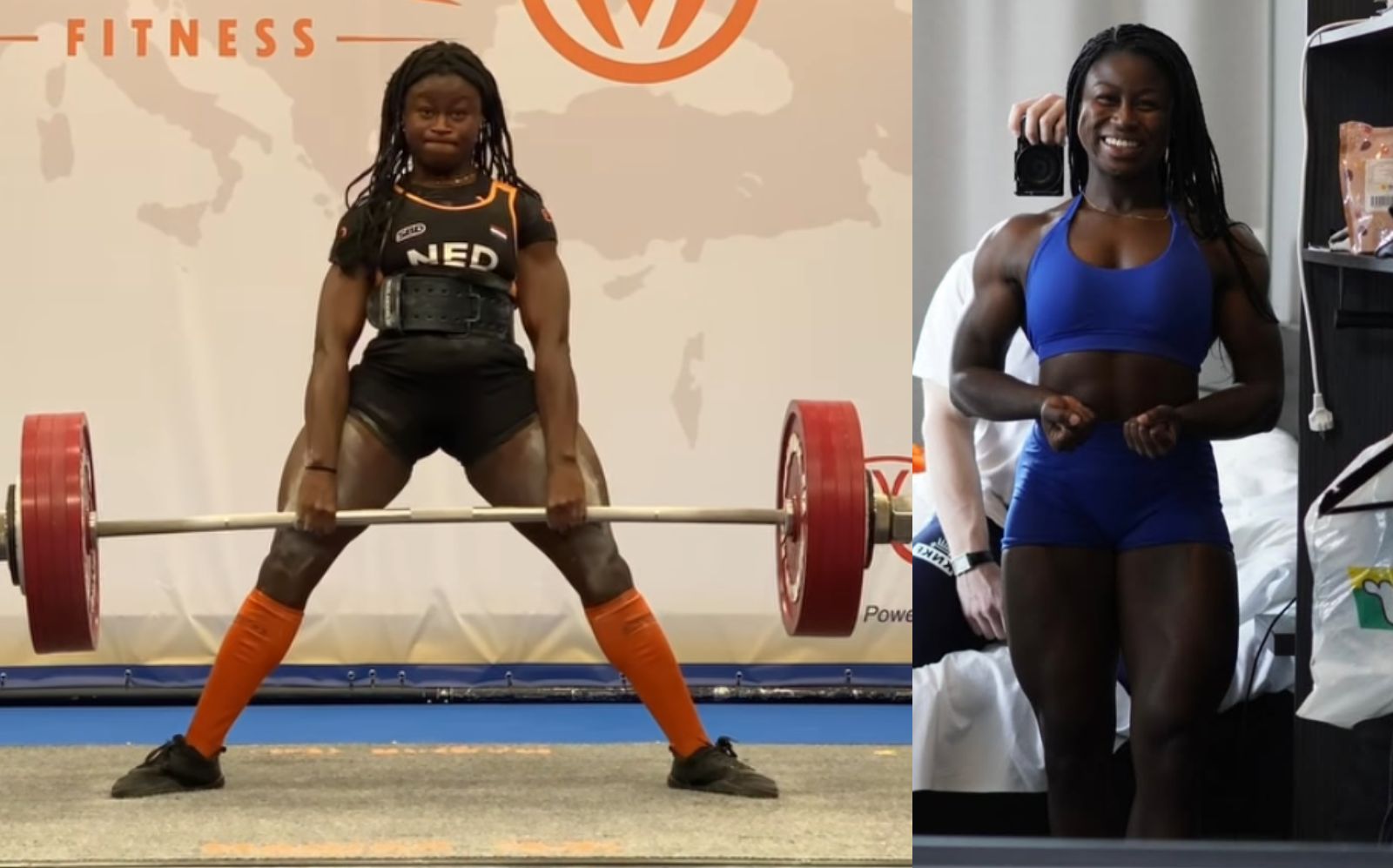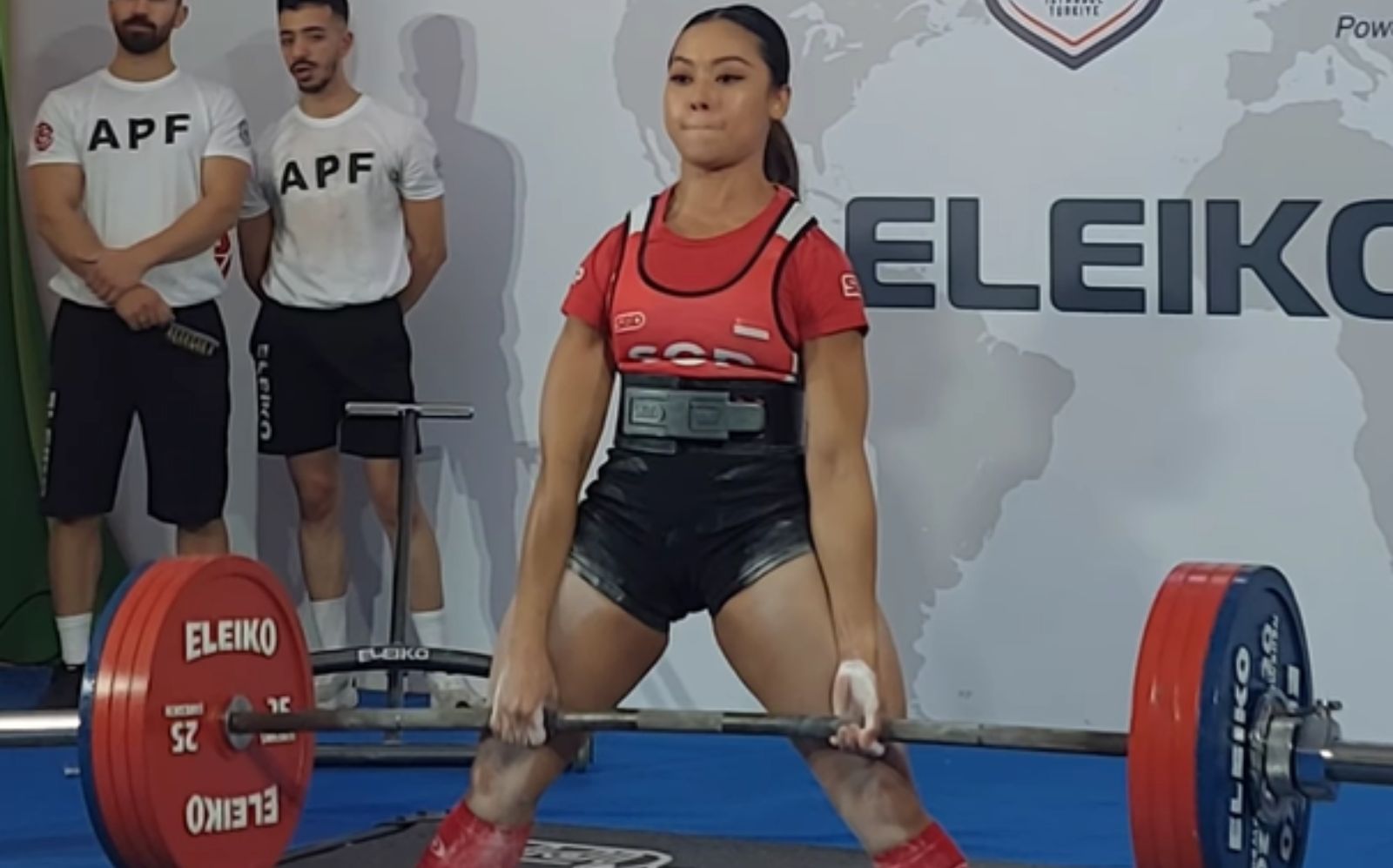Squats are often called the king of exercises. It’s hard to argue with this point of view given that squats are one of the most functional and effective strength and muscle builders around.
Whatever your training goal, squats will help you achieve it.
However, in my opinion, based on over 30 years working as a personal trainer, deadlifts are every bit as valuable as squats and, in some cases, are actually better. In short, I believe that deadlifts are also exercise royalty.
So, what’s so great about deadlifts? I’m glad you asked! Reasons to build your workouts around deadlifts include:
- Functional – deadlifts teach you how to lift heavy objects safely.
- Accessibility – all you need for deadlifts is a barbell; no squat rack required.
- Variability – there are lots of deadlift variations to choose from.
- Effective – deadlifts build muscle and strength, guaranteed!
- Satisfaction – nothing beats the feeling of pulling a heavy weight off the floor.
- Efficient – deadlifts work so many muscles that they’re essentially a full-body exercise.
However, while deadlifts have enormous benefits, there are downsides, too. The main one is that if you deadlift incorrectly, the risk of injury is very high. Unfortunately, form faults with deadlifts are very common.
In this article, I reveal the five top deadlifting form errors and how to fix them.
Level Up Your Fitness: Join our 💪 strong community in Fitness Volt Newsletter. Get daily inspiration, expert-backed workouts, nutrition tips, the latest in strength sports, and the support you need to reach your goals. Subscribe for free!
5 Deadlifting Form Faults and How to Fix Them
A good deadlift is a thing of beauty. Good deadlifting form means you can lift heavy weights with minimal risk of injury. You’ll also build muscle mass and strength through your entire body, particularly the posterior chain.
However, using improper form makes deadlifts much less effective and far riskier. In fact, a badly-performed deadlift could lead to severe injury and even land you in hospital. I don’t say this to put you off doing deadlifts. In contrast, I want to stress the importance of deadlifting correctly.
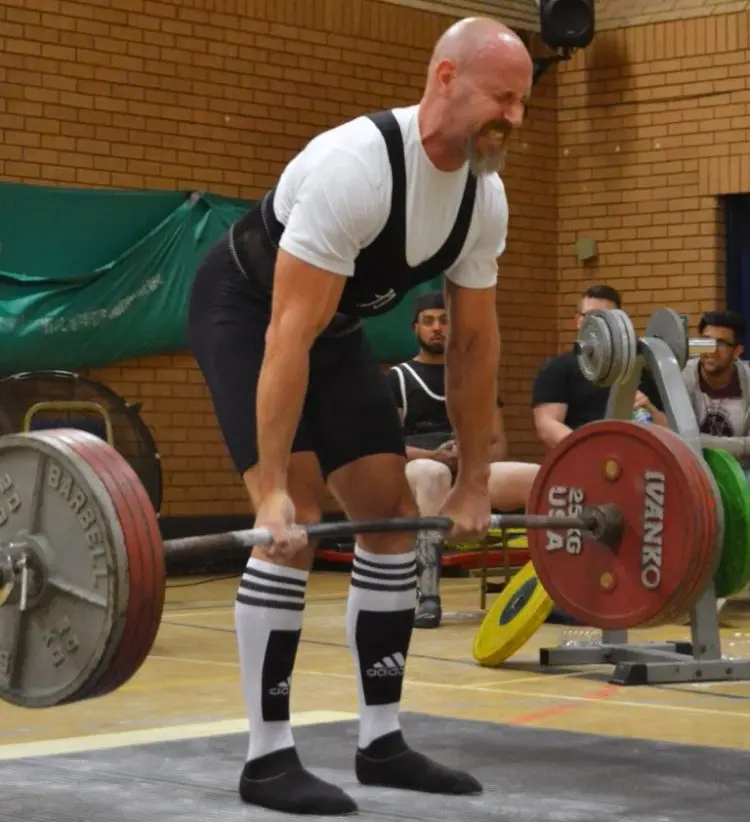
I’ve taught hundreds of people how to deadlift and done lots of deadlifting myself as a competitive powerlifter. Based on all that experience, these five of the most common deadlifting faults and how to fix them.
1. Rounding the Lower Back
Of all the mistakes you can make during deadlifts, rounding your lower back is arguably the worst. Rounding your lower back puts tremendous stress on your lumbar ligaments and discs (1). These structures are easily damaged and slow to heal. In some cases, the only way to fix such an injury is surgery.
There are several reasons that your lower back might round during deadlifts. These include:
Tight Hamstrings
Tight hammies pull your pelvis into a posterior pelvic tilt, tucking your tailbone under and rounding your lumber spine. Hamstring tightness is a common problem, especially among people who spend a lot of time sitting. Stretching your hamstrings to improve flexibility and doing deadlifts from blocks will help alleviate this problem.
Weak Core
Core is the collective term for the muscles of your midsection, including the rectus abdominis, obliques, transverse abdominis, and erector spinae. These muscles act like a weightlifting belt to support your lumber spine. Strong core muscles will help reduce the likelihood of lumbar rounding.
Lifting Too Much Weight
Deadlifting very heavy weights increases the risk of rounding your lower back. While heavy deadlifts are rewarding, it’s best to work within your limits and avoid using so much weight that your form is compromised.
Standing Too Far Away from The Barbell
The further you stand from the weight, the greater the load on your lower back will be, and the more likely you are to round it. Start each rep with your toes under the bar to shorten the lever and minimize lower back stress.
Lack of Awareness
Some people cannot tell when their lower back is rounded. This is a common problem for people who habitually slouch. Ask someone to watch you deadlift and get them to tell you if your lower back is rounded. Alternatively, you could video yourself to check your form. Practice arching rather than rounding your lower back.
Summary: Rounding your lower back is the cardinal sin of deadlifting. Stretch your hamstrings, strengthen your core, use less weight, stand closer to the bar, and be more posturally aware to stop making this potentially dangerous mistake.
2. Not Engaging the Lats
It’s all too easy to forget about your lats during deadlifts. After all, deadlifts are often thought of as a leg exercise, something like a squat with your arms by your sides. However, the lats should be very active during deadlifts, and not using them is a major mistake.
During a properly performed deadlift, the lats (short for latissimus dorsi, the muscles on the side of your upper back) contract to push the bar back toward your legs. If the bar drifts forward, the distance between the weight and your feet increases, putting more strain on your lower back and making the movement less mechanically efficient.
Here are my top tips for increasing lats engagement during deadlifts:
Flex the Lats During Your Set-Up
A good deadlift starts with a solid set-up. Don’t just bend over and heave! Instead, get into position, grab the bar with your preferred grip, and then pull yourself down toward the bar. Flex your lats before you start each rep, and focus on maintaining your mind-muscle connection throughout your set.
Warm Up With “Sweeping” Deadlifts
Sweeping deadlifts use a band to pull the bar away from your legs. Consequently, you’ll need to use your lats to pull the bar toward you throughout each rep. Do this exercise as part of your warm-up to remind you how to use your lats during your conventional sets.
To do sweeping deadlifts, loop a resistance band around the middle of your barbell and fix it to an anchor point a few feet in front. Deadlift as usual, but make sure you keep the band tight by pulling the bar backward.
Imagine You Are Bending the Barbell Around Your Legs
Barbells are usually pretty straight. However, imagining you are bending the bar around your legs will increase lat engagement. Rotate your hands outward and squeeze your elbows and upper arms toward your sides to turn on your lats and keep them engaged during deadlifts.
Summary: Engaging your lats will help keep the bar closer to your legs for heavier, safer pulls. Concentrate on using your lats and not just your legs during deadlifts. Practice flexing your lats so that using them during deadlifts becomes second nature.
Level Up Your Fitness: Join our 💪 strong community in Fitness Volt Newsletter. Get daily inspiration, expert-backed workouts, nutrition tips, the latest in strength sports, and the support you need to reach your goals. Subscribe for free!
3. Bending the Arms
Deadlifts use so many muscles that you can consider them a full-body exercise. However, some of those muscles should be working isometrically or statically. In other words, they generate force without changing length. For example, your core stabilizes your spine without causing movement to occur.
In an effort to lift as much weight as possible, many lifters try to bend their elbows during deadlifts. Consequently, they use their biceps isotonically rather than isometrically. This is a mistake because:
- Bending your arms will not help you lift more weight.
- You could tear your biceps, especially if you use a mixed grip.
- Doing so makes you look like an amateur!
Here are a couple of tips that’ll help break the habit of bending your arms during deadlifts:
Flex Your Triceps
It’s much harder to bend your arms when your triceps are tense. During your set-up, grip the bar and flex your triceps as hard as you can. As well as stopping you from bending your elbows, your triceps will assist your lats in pushing the bar back toward your legs.
Visualize Your Arms as Cables and Your Hands as Hooks
While this tip might seem a little strange, I’ve used it with many of my clients and in my own training to prevent inadvertently bending the arms during deadlifts. Picture your arms as cables and your hands as hooks with no purpose other than connecting you to the barbell.
Summary: Bending your arms during deadlifts offers no advantages and can cause serious injuries. Instead, flex your triceps and imagine your arms are unbendable steel cables with hooks at the ends. Remember that deadlifts are not a biceps exercise!
4. Letting the Hips Rise Faster Than the Shoulders
In a perfect deadlift, your hips, shoulders, and the barbell should move at pretty much the same speed. This ensures the load and stress are distributed evenly throughout your body.
However, some lifters allow their hips to rise faster than their shoulders. This increases the distance between the weight and your base of support, putting more strain on your lower back and reducing mechanical efficiency.
Needless to say, lifting your hips too fast makes deadlifts harder and more dangerous than they need to be. Common causes of this problem include trying to squat the weight up and using too much weight.
Letting your hips shoot up can be a hard habit to break, but if you want to make your deadlifts as strong and safe as possible, it’s something you must learn to do. Ways to stop your hips from rising faster than your shoulders include:
Visualize Driving Your Feet into the Floor
The start of a deadlift should look and feel a lot like a leg press. Drive your feet into the floor while keeping your torso up and shoulders back. This is one of the reasons that leg presses are such an effective accessory exercise for deadlifts.
Think “Proud Chest”
It’s much harder for your hips to shoot up when you maintain a proud, prominent chest. However, if your chest collapses, your hips are much more likely to rise faster than your shoulders. Keep your chest up during deadlifts, especially during the start and midpoint of each rep.
Drive Your Hips Forward, Not Up
Deadlifts involve extending your knees and hips simultaneously. So, after your initial lift-off, switch your focus to pushing your hips forward to keep the weight moving upward. This makes it much harder for your hips to rise vertically.
Summary: Letting your hips rise faster than your shoulders makes your deadlift weaker and riskier. Fix this problem by driving your feet into the floor, maintaining a proud chest, and pushing your hips forward instead of letting them drift back and up.
5. Improper Stance or Grip Width
Stance and grip width during deadlifts are highly variable. Deadlifters use anything from a hip to shoulder to very wide foot placement. It all depends on your height, hip structure, and the type of deadlift you perform, i.e., conventional vs. squat stance vs. sumo deadlifts.
The ideal grip width also depends on several factors, including height, shoulder structure, and type of deadlift.
Consequently, there is no one-size-fits-all stance and grip width recommendation for deadlifting. That said, while there are many acceptable stance and grip width variations, it’s still possible to get these things wrong, and make a mess of your deadlift.
For example, a wider-than-ideal stance could mean you have to adopt a wide grip on the bar, forcing you to start each rep from a lower-than-ideal position. This makes you weaker off the floor and means you’ll have to lift the weight further to complete your reps.
In contrast, a very narrow stance increases quads engagement while limiting force production from your hamstrings and glutes. Your balance and stability will also be affected.
Summary: Every deadlifter should experiment with their stance and grip width to determine what works best. Hip-width feet and shoulder-width hands is a good place to start for conventional deadlifts but then fine-tune from there to find your optimal position.
Ultimately, the best stance and grip position is the one that feels natural and allows you to lift the most weight while maintaining safe form.
Deadlifting Form – Closing Thoughts
The deadlift’s status as an excellent exercise hinges on your ability to perform it correctly. Done right, the deadlift is the ultimate strength and muscle builder. But, done wrong, it could be a real back-breaker.
Use the information in this article to form-check your deadlift and fix any faults you find. While this may mean reducing your weights or lifting more mindfully, your efforts will be rewarded.
So, ugly deadlifts? Just say no! Perfect your form and enjoy all the benefits that deadlifts have to offer.
References:
- Saraceni N, Kent P, Ng L, Campbell A, Straker L, O’Sullivan P. To Flex or Not to Flex? Is There a Relationship Between Lumbar Spine Flexion During Lifting and Low Back Pain? A Systematic Review With Meta-analysis. J Orthop Sports Phys Ther. 2020 Mar;50(3):121-130. doi: 10.2519/jospt.2020.9218. Epub 2019 Nov 28. PMID: 31775556.

